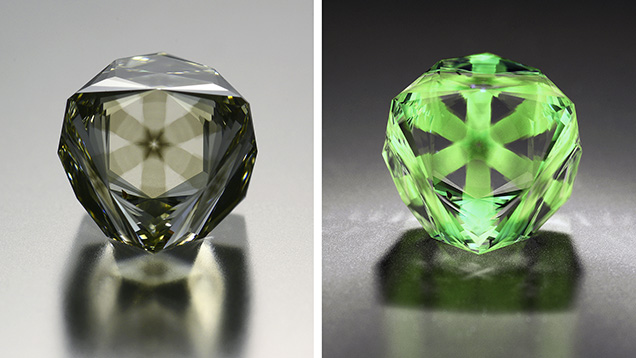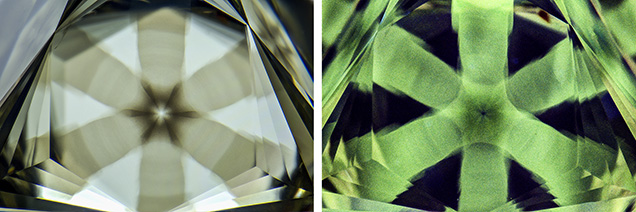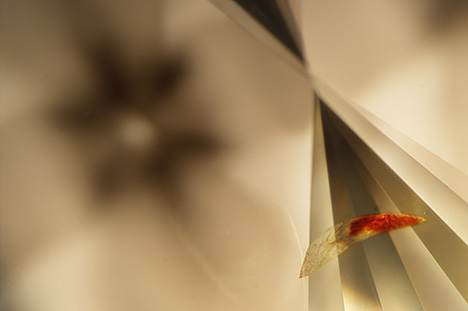Faceted Diamond Octahedron with a Remarkable Stellate Cloud Inclusion

A 3.70 ct faceted Fancy brownish greenish yellow diamond (figure 1, left) was recently submitted to the Carlsbad laboratory for color origin and identification service. The diamond was remarkable in that it contained an eye-visible stellate cloud inclusion consisting of six legs that each radiated to a point on the polished octahedron. Diamonds containing star-like clouds are sometimes referred to as “asteriated” in the trade (T. Hainschwang et al., “The Rhodesian Star: An exceptional asteriated diamond,” Journal of Gemmology, Vol. 34, No. 4, 2014, pp. 306–315). While GIA occasionally encounters asteriated diamonds, this one was striking due to the well-defined nature of the star and the strong yellowish green color it exhibited under long-wave UV (figure 1, right).

Gemological examination revealed a type Ia diamond, showing a typical cape series in the visible spectrum. Hydrogen bands in the infrared spectrum and the UV-Vis-NIR spectrum were consistent with the observed “hydrogen cloud” inclusions (figure 2). These clouds in diamonds consist of a high density of light scattering micro-inclusions consistent with those that have been reported to be graphite (B. Rondeau et al., “Three historical ‘asteriated’ hydrogen-rich diamonds: Growth history and sector-dependent impurity incorporation,” Diamond and Related Materials, Vol. 13, No. 9, 2004, pp. 1658–1673) that correlate strongly with the presence of hydrogen (W. Wang and W. Mayerson, “Symmetrical clouds in diamond—the hydrogen connection,” Journal of Gemmology, Vol. 28, No. 3, 2002, pp. 143–152). Also observed was brown radiation staining in a shallow feather, indicating that the stone had been exposed to natural alpha radiation (figure 3).

While the cutting style was unconventional, it served to showcase the remarkable inclusion scene contained within the diamond. This is one of the most interesting diamonds of this type examined at GIA’s Carlsbad laboratory.



